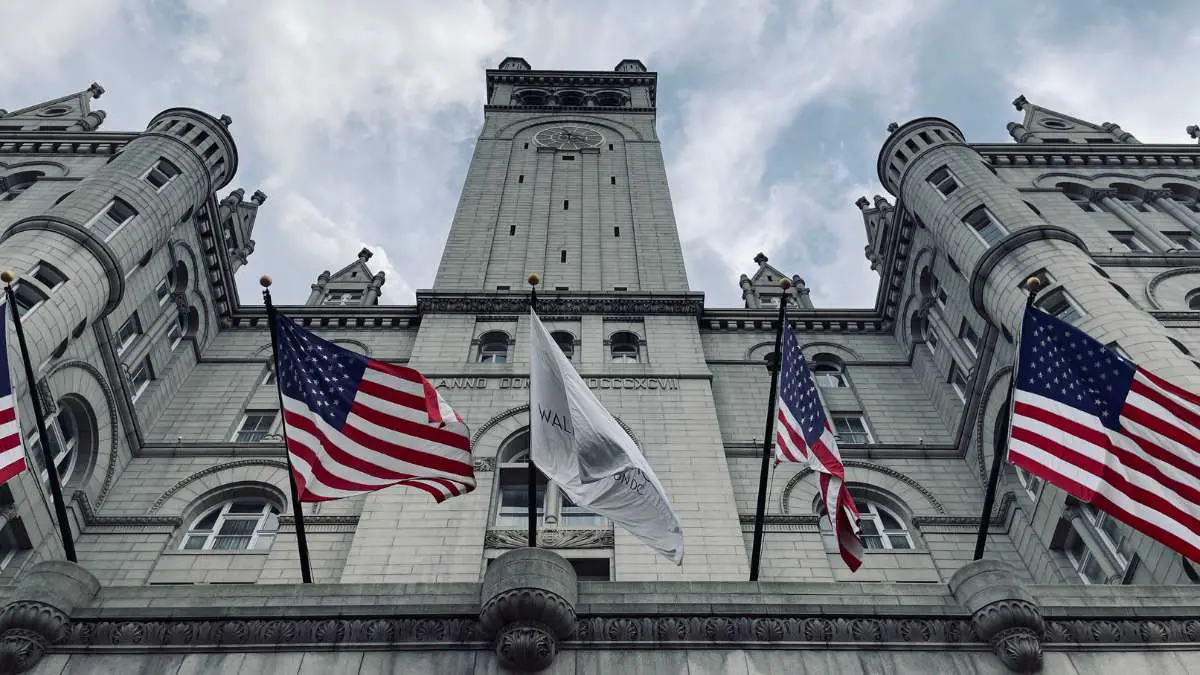Table of Contents
- Introduction
- DEI Under Siege: Academic Publishing’s New Reality
- The Conservative Publishing Boom
- Trade Publishing: A Market Saturated with Politics
- Journalism and Freedom of the Press
- Cultural Institutions in the Crosshairs
- A Polarized Marketplace for Ideas
- Conclusion
Introduction
In the wake of Donald Trump’s return to the White House, the American publishing industry is confronting a wave of uncertainty, tension, and transformation. Trump’s second term has brought a familiar intensity—a blend of political upheaval, cultural polarization, and combative rhetoric—that is once again testing the resilience of publishers, writers, academics, and journalists.
This time around, the stakes feel higher. The industry is no longer merely responding to provocative tweets or controversial book releases. Now, it is bracing for structural shifts—policy-driven changes poised to affect everything from federal arts funding to academic freedom.
While much of the discourse around Trump’s presidency focuses on economics, immigration, or geopolitics, the publishing industry is undergoing a quiet reckoning. The environment is becoming increasingly polarized, with lines drawn around political ideology and the kinds of stories that get told, the funding that supports them, and the platforms on which they are distributed.
From the halls of academia to the shelves of independent bookstores, and from the pages of political exposés to the algorithms that prioritize what we read online, the Trump administration’s influence is unmistakable—and in many ways, unprecedented. This article explores how Donald Trump’s second term is reshaping the American publishing industry, the implications for key players, and the challenges and opportunities ahead.
DEI Under Siege: Academic Publishing’s New Reality
Academic publishing is one of the sectors that is feeling the most immediate and intense effects of the Trump administration’s policies. One of the most controversial moves so far has been the systematic rollback of diversity, equity, and inclusion (DEI) initiatives across federal agencies and educational institutions. This shift has sent ripples through the scholarly world, where DEI principles have become deeply embedded in recent years, not just in hiring practices, but also in research agendas, editorial priorities, and grant funding.
University presses and academic journals are now navigating a more hostile environment. Research focused on race, gender identity, social justice, and environmental equity is being deprioritized or outright defunded by federal agencies. Grants once available through the National Endowment for the Humanities (NEH) or the Department of Education are drying up.
This has caused university libraries—major consumers of academic titles—to become more cautious in acquiring works that could be viewed as politically sensitive. The result is a chilling effect: scholars may begin to self-censor, and publishers may hesitate to take on groundbreaking but potentially controversial research.
Moreover, the ideological pressure isn’t just top-down. State legislatures in conservative-leaning states are passing laws that restrict the teaching of critical race theory, queer studies, and even certain forms of climate science. These local policies further complicate the national landscape, making it difficult for academic publishers to maintain consistent strategies. Some presses are doubling down on their mission to elevate marginalized voices, while others quietly shift focus to more “neutral” topics, hoping to avoid becoming political flashpoints.
The Conservative Publishing Boom
While progressive-leaning sectors of the industry feel constrained, conservative publishing is experiencing a renaissance. Trump’s second term has energized right-wing readers and emboldened conservative publishing houses, which are seizing the moment to expand their influence. Companies like Regnery Publishing, Encounter Books, and Winning Team Publishing—co-founded by Donald Trump Jr.—are seeing increased demand for titles that align with the administration’s worldview.
These publishers are thriving in an environment where cultural resentment and anti-elitist sentiment run high. Books promoting “anti-woke” perspectives, criticizing mainstream media, or reinforcing nationalist ideals are gaining traction among a growing base of readers who feel alienated by what they perceive as liberal overreach in media and academia. President Trump’s books continue to sell well, serving as revenue generators and ideological touchstones for his supporters.
The success of these conservative titles is reshaping how publishers think about market segmentation. Traditional publishing giants are now more alert to the economic potential of right-wing readerships. Some are even launching conservative imprints to hedge their bets. This trend raises more profound questions about the commodification of ideology in publishing. Are publishers chasing profits at the expense of editorial integrity? Or are they simply responding to reader demand in a politically fragmented nation? Either way, the growing presence of conservative publishers tilts the market in new directions.
Trade Publishing: A Market Saturated with Politics
Trade publishing—comprising the commercial publication of fiction and nonfiction for a general audience—is in an awkward transition. The first Trump presidency saw a surge in politically themed books. Titles like Fire and Fury, Fear, and Too Much and Never Enough flew off the shelves, and publishers eagerly greenlit every exposé or insider account they could find. But by the time the 2024 election rolled around, readers seemed weary of the political drama. The market was becoming saturated, and publishers were starting to feel fatigued.
In Trump’s second term, the appetite for political nonfiction is noticeably subdued. Many readers have simply tuned out. There’s a growing sense that little new can be said about Trump that hasn’t already been shouted across airwaves and social media. As a result, publishers are scaling back on politically charged titles unless they offer truly fresh perspectives or explosive revelations. That doesn’t mean political books are going away, but the bar for entry is higher, and the commercial expectations are more modest.
In response, trade publishers are pivoting toward content that provides either escapism or practical guidance. Fiction genres like fantasy, romance, and historical fiction are enjoying renewed popularity, offering readers a break from the relentless churn of current events. Meanwhile, nonfiction books on mental health, entrepreneurship, parenting, and spirituality are gaining ground. These titles reflect a broader cultural desire for self-preservation in political instability.
Journalism and Freedom of the Press
Perhaps no segment of the publishing ecosystem is under more pressure than journalism. Trump’s antagonistic relationship with the media intensified in his second term. His administration has continued to undermine the credibility of mainstream outlets, labeling them purveyors of “fake news” and selectively granting access to friendly media. This adversarial posture is not just rhetorical—it has real implications for press freedom, newsroom safety, and public trust.
Major news organizations are adjusting their strategies accordingly. Some are doubling down on investigative journalism, determined to hold power accountable even at personal and institutional risk. Others are diversifying their content offerings, leaning more heavily into lifestyle, opinion, and culture coverage to balance political reporting and avoid burnout among their audiences. Social media remains a double-edged sword—crucial for distribution and a minefield of disinformation and harassment.
Smaller and independent news outlets face even more dire challenges. Without the legal and financial muscle of legacy media, they are particularly vulnerable to defamation lawsuits, loss of funding, and public discrediting. At the same time, many are doing some of the most courageous and necessary reporting in today’s media landscape. The Trump administration’s actions have catalyzed a reevaluation of journalistic ethics, mission, and sustainability, pushing the profession into self-examination and reinvention.
Cultural Institutions in the Crosshairs
Cultural and literary institutions are also being tested in this new political climate. The Trump administration has once again proposed eliminating the National Endowment for the Arts (NEA) and the National Endowment for the Humanities (NEH)—a move that, if realized, would dismantle critical support systems for libraries, museums, community arts programs, and nonprofit publishers. These organizations are crucial in expanding access to literature, funding local storytelling initiatives, and preserving historical memory.
The threat is not hypothetical. Bipartisan coalitions in Congress blocked previous attempts to cut these agencies, but the current political composition makes such resistance less likely. If the NEA and NEH are shuttered or significantly defunded, the ramifications will be felt most acutely by rural and underserved communities that rely on public arts infrastructure. Independent publishers specializing in poetry, translation, and experimental literature would also struggle to survive without these funding streams.
Yet amid the uncertainty, some institutions are mobilizing. Coalitions of artists, educators, and publishers are forming advocacy campaigns to defend federal arts support. Philanthropic organizations are stepping up to fill potential funding gaps. And digital technologies are enabling more decentralized forms of cultural production, allowing creators to bypass traditional gatekeepers. Still, the road ahead will require resilience, coordination, and a willingness to adapt.
A Polarized Marketplace for Ideas
All these trends paint a picture of a publishing industry caught between opposing forces. On one side is a government administration that favors a narrower vision of cultural and intellectual life, often at the expense of pluralism and inquiry. On the other hand, publishing’s legacy is as a bastion of free expression, diversity of thought, and democratic engagement. The tension between these poles is not new but is becoming more acute.

For readers, this means navigating a marketplace where ideology increasingly determines visibility. Algorithms prioritize content that reinforces existing beliefs, and major retailers are facing pressure to de-platform controversial authors or titles. This politicization of book distribution and a media environment steeped in polarization make engaging in nuanced, evidence-based discourse harder than ever.
For publishers, the challenge is existential. How do you protect editorial independence while staying financially viable? How do you champion free speech without giving a platform to harmful disinformation? How do you ensure access to diverse stories in a climate that increasingly punishes dissent? These are not easy questions, but they are central to the industry’s future.
Conclusion
Trump’s second term is proving to be more than a rerun of his first. It is a full-blown reconfiguration of America’s cultural and intellectual terrain, with the publishing industry standing directly in the path of its shifting winds. From academic presses to mass-market imprints, from local newsrooms to national arts agencies, the landscape is redrawn—sometimes subtly, sometimes starkly. What remains to be seen is whether the industry will respond with retreat, resistance, or reinvention.
The answer may depend on where you look. In some quarters, there is fear and contraction; in others, defiance and innovation. Conservative publishers are gaining ground, even as progressive imprints dig in. Libraries and museums are preparing for budget battles, even as digital platforms create new ways of reaching readers. Amid all this flux, one thing remains clear: the story of American publishing under Trump is far from over. It’s being written in real time, with each headline, each book release, and each policy decision adding another chapter.
